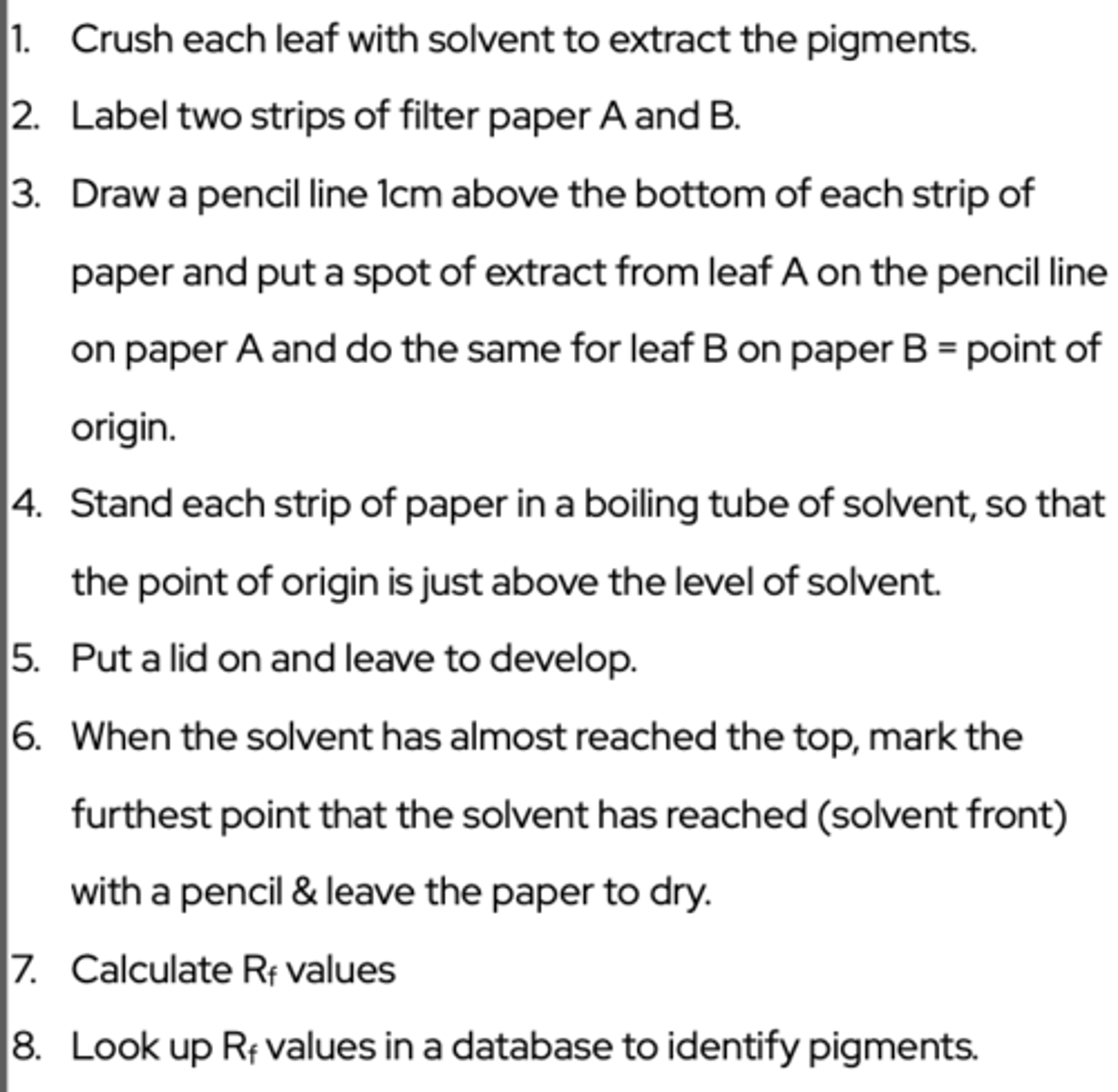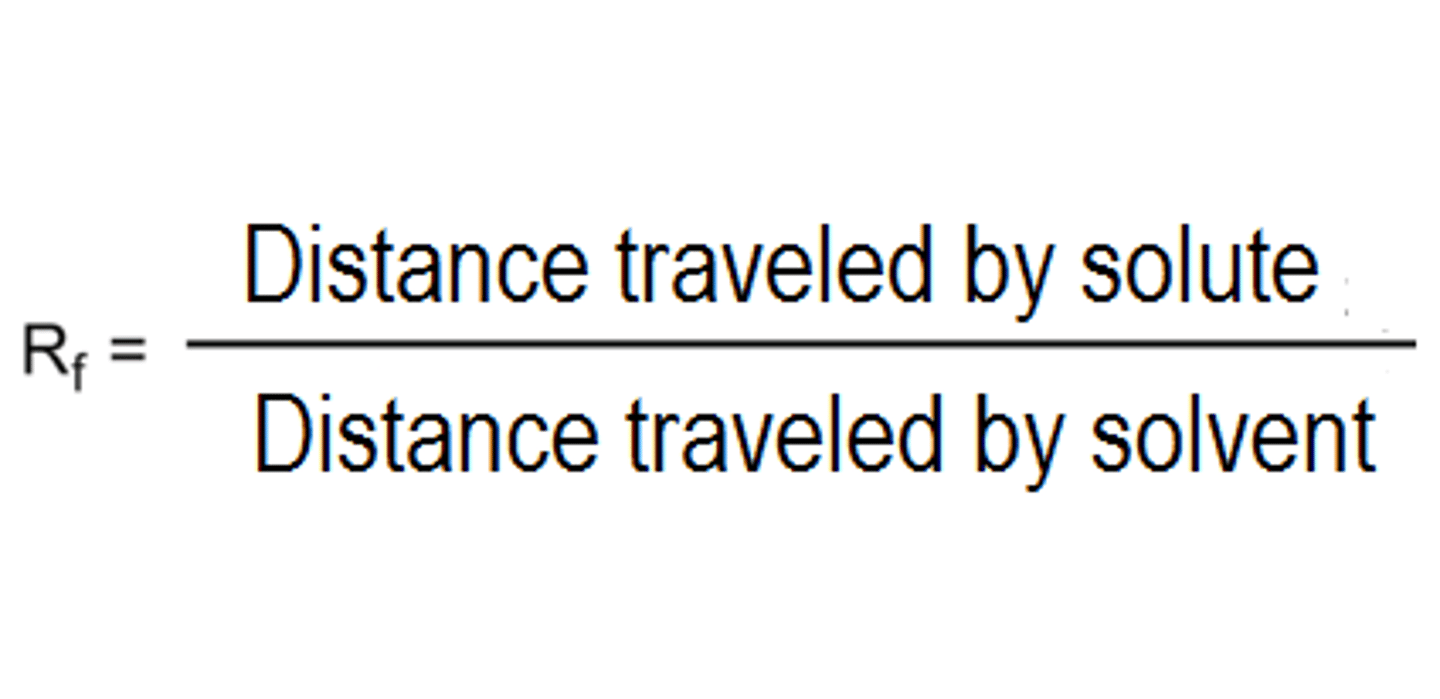RP7: Use of chromatography to investigate the pigments isolated from leaves of different plants, eg leaves from shade-tolerant and shade-intolerant plants or leaves of different colours
1/14
There's no tags or description
Looks like no tags are added yet.
Name | Mastery | Learn | Test | Matching | Spaced |
|---|
No study sessions yet.
15 Terms
What is the method for this experiment? (8)

How can photosynthetic pigments in plants be separated? (1)
Using paper chromatography
What are the two phases involved in paper chromatography? (2)
- Mobile phase: Molecules can move (e.g., a liquid solvent).
- Stationary phase: Molecules cannot move (e.g., paper)
Describe the movement of the solvent in paper chromatography. (2)
- When the paper is placed vertically in the solvent, the solvent moves upwards through the paper.
- The solvent carries any dissolved pigments with it.
How can pigments be identified using paper chromatography? (1)
By calculating the Rf value and comparing it to published values
How do you calculate rf value? (2)

Why should the origin be drawn in pencil? (2)
- The ink in pen may be soluble in the solvent
- So it could be confused with pigments on the chromatogram
Why should the point of origin be above the level of the solvent? (1)
The pigments in the sample may be soluble in the solvent and would run off the paper if the solvent were above the pencil line
Explain why it is important to mark the solvent front quickly once the chromatography paper is removed from the boiling tube. (2)
- Once the solvent evaporates, the solvent front would no longer be visible.
- The distance travelled by the solvent front needs to be measured to calculate the Rf values of the pigments
Explain why the student measured to the centre of each pigment spot when measuring the distance travelled by each pigment. (1)
It standardises readings and allows comparisons to be made
Explain why the obtained Rf values were similar, but not identical, to the published values. (1)
Different solvent, different paper, or different running conditions may affect the Rf value
Explain why a substance may not move up the chromatography paper at all. (1)
Some substances may be insoluble in the solvent
Suggest the advantage of a plant containing several different photosynthetic pigments. (2)
- Different pigments absorb different wavelengths of light
- So having a range of pigments maximises the wavelengths of light that can be absorbed and maximises the rate of photosynthesis
State the precise location of photosynthetic pigments in a plant cell. (1)
Thylakoid membranes of chloroplasts
A plant has two varieties, one with yellow leaves and one with green leaves. Suggest why the yellow-leafed variety grows more slowly. (4)
- Yellow leaves have a lower concentration of chlorophyll or no chlorophyll.
- Less light can be absorbed for the light-dependent reaction.
- Less ATP and reduced NADP are produced.
- The rate of the light-independent reaction is lower, so fewer useful organic molecules are produced (which are needed for growth)